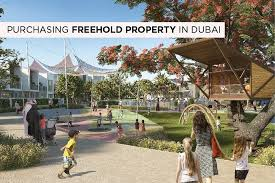Now Reading: UAE Real Estate Forecast 2025: Prices, Demand, and Hotspots
-
01
UAE Real Estate Forecast 2025: Prices, Demand, and Hotspots
UAE Real Estate Forecast 2025: Prices, Demand, and Hotspots

Table of Contents
The United Arab Emirates (UAE) real estate market is poised for another dynamic year in 2025, driven by strong demand, economic growth, and investor-friendly policies. With a projected market value of $700 billion and an 8% compound annual growth rate (CAGR) through 2030, the UAE remains a top destination for U.S. investors seeking high returns in a tax-advantaged environment, per mordorintelligence.com. Despite concerns over potential oversupply, cities like Dubai, Abu Dhabi, and emerging emirates such as Ajman and Ras Al Khaimah offer diverse opportunities. This article explores the UAE’s 2025 real estate forecast, focusing on price trends, demand drivers, and investment hotspots for U.S. investors, backed by recent market insights.
Market Overview: Why the UAE in 2025?

The UAE’s real estate sector is fueled by a robust economy, with a 6.2% GDP growth forecast for 2025, led by non-oil sectors like real estate, tourism, and technology, per colife.ae. For U.S. investors, key attractions include:
- Tax Advantages: No capital gains tax (CGT), property tax, or personal income tax on rental income below AED 375,000 ($102,000), compared to U.S. CGT of 15–20% and property taxes of 1–2%, per tax.gov.ae. A 9% Corporate Tax (CT) applies above this threshold, offset by the U.S.-UAE Double Taxation Agreement (DTA), per irs.gov.
- Foreign Ownership: 100% ownership in freehold areas since 2002, allowing U.S. investors to fully own properties in prime locations like Dubai’s Palm Jumeirah or Abu Dhabi’s Yas Island, per emirates.estate.
- Visa Incentives: Golden Visas for investments over AED 2 million ($545,000) offer long-term residency, per ica.gov.ae.
- Population Growth: Dubai’s population is expected to reach 4 million in 2025, driving housing demand, per damacproperties.com.
In 2024, Dubai alone recorded 180,987 transactions worth AED 761 billion ($207 billion), a 36.5% increase year-over-year, per globalpropertyguide.com. However, a projected influx of 76,000 new units in 2025 may moderate price growth, per colife.ae.
Price Trends for 2025
Dubai: Steady Growth with Potential Correction
Dubai’s residential prices surged 20% in 2024, reaching AED 1,597 per square foot, per deloitte.com. For 2025, forecasts predict:
- Price Growth: 5–8% annual increase, with luxury areas like Palm Jumeirah and Downtown Dubai seeing up to 10–20% spikes, per damacproperties.com. However, Fitch Ratings warns of a potential 10–15% price drop in late 2025 due to 76,000 new units outpacing 5% population growth, per gulfnews.com.
- Rental Surge: Short-term rentals are expected to rise 18%, and long-term leases by 13%, with average yields of 6.7–7%, outpacing U.S. markets like Miami (4–6%), per damacproperties.com.
- Luxury Segment: Prime properties (e.g., Palm Jumeirah villas) may see 20% price hikes, with transactions above AED 30 million ($8.2 million) increasing, per posts on X.
Abu Dhabi: Moderate but Stable Growth

Abu Dhabi’s market grew steadily, with apartment prices up 4.3% and villas 2.3% in 2024, per cbre.ae. For 2025:
- Price Growth: 3–5% increase, driven by demand in areas like Saadiyat Island and Yas Island, per topluxuryproperty.com.
- Rental Yields: 6–8% for apartments in Al Ghadeer and Al Reef, competitive with U.S. markets like Austin (5–7%), per savills.ae.
- Transaction Volume: Q1 2025 saw $6.9 billion in transactions, up 34.5% year-over-year, per mediaoffice.abudhabi.
Other Emirates: Affordable Growth
- Ajman: Apartment prices (AED 300,000–800,000) are 30–50% lower than Dubai, with 10–15% yields, per smartzone.ae. Prices may rise 5–7% in 2025.
- Ras Al Khaimah: Al Marjan Island saw apartment sales at AED 1.57 million ($427,000) in 2023, with 5–6% growth expected, per smartzone.ae.
- Sharjah: Apartment prices (AED 601,000–1.01 million) may increase 4–6%, driven by cultural appeal, per smartzone.ae.
Demand Drivers
- Foreign Investment: Dubai’s tax-free ownership and long-term visas attract high-net-worth U.S. investors, with foreign investment up significantly in 2024, per damacproperties.com. The luxury segment saw 15% growth in Q1 2025, per posts on X.
- Tourism Boom: Dubai welcomed 18.7 million visitors in 2024, boosting short-term rental demand by 18%, per deloitte.com. Abu Dhabi’s cultural hubs like Saadiyat Island also drive Airbnb demand, per gulfnews.com.
- Population Influx: Dubai’s 2040 Urban Master Plan projects a population of 5.8 million by 2040, fueling housing needs, per colife.ae. Expatriates and young professionals prefer apartments in Jumeirah Village Circle (JVC) and Dubai Marina, per mordorintelligence.com.
- Government Initiatives: Visa reforms, 100% foreign ownership, and sustainable development under Dubai’s 2040 Plan and Abu Dhabi’s Vision 2030 enhance investor confidence, per topluxuryproperty.com.
- Economic Diversification: Non-oil sectors (75% of GDP) and tech hubs like Dubai Internet City drive demand for commercial and residential spaces, per cbre.ae.
Investment Hotspots for U.S. Investors
1. Dubai: Luxury and Off-Plan Opportunities
- Palm Jumeirah and Downtown Dubai: Ideal for luxury villas and apartments, offering 5–9% yields and 10–20% price growth, per damacproperties.com. Emaar’s The Oasis and DAMAC’s Lagoons are prime off-plan projects with 20–30% appreciation potential by – Dubai South and JVC: Affordable apartments (AED 500,000–1 million) yield 7–10%, appealing to mid-income tenants, per bhomes.com. Off-plan sales, 56% of Q1 2025 transactions, offer flexible payment plans, per posts on X.
- Action for U.S. Investors: Target off-plan units from RERA-registered developers like Emaar. File IRS Form 1040 for rental income and Form 1116 for UAE CT credits.
2. Abu Dhabi: Stable and Affordable
- Saadiyat Island and Yas Island: Luxury apartments and villas yield 6–8%, with 3–5% price growth, per savills.ae. Aldar’s Al Raha Beach offers off-plan options with 3–5-year payment plans.
- Al Ghadeer and Al Reef: Affordable apartments (AED 500,000–1 million) attract mid-income expatriates, yielding 7–8%, per topluxuryproperty.com.
- Action for U.S. Investors: Register with Abu Dhabi Real Estate Centre (ADREC) for incentives. File IRS Form 8938 for assets over $50,000.
3. Ajman: High-Yield Short-Term Rentals
- Al Nuaimiya and Emirates City: Studios (AED 300,000–800,000) offer 10–15% yields, driven by a 15% tourism surge in 2024, per gulfnews.com. Prices may rise 5–7%.
- Action for U.S. Investors: Register with Ajman’s Tourism Department for Airbnb permits. Keep income below AED 375,000 to avoid UAE CT.
4. Ras Al Khaimah: Emerging Luxury
- Al Marjan Island: Luxury apartments (AED 1–1.57 million) yield 6–8%, with 5–6% price growth, per smartzone.ae. Wynn Resorts’ project boosts tourism appeal.
- Action for U.S. Investors: Verify projects with Ras Al Khaimah’s Real Estate Regulatory Authority. Consult U.S. tax advisors for IRS compliance.
5. Sharjah: Cultural and Affordable
- Aljada and Muwaileh: Apartments (AED 601,000–1.01 million) yield 6–8%, with 4–6% price growth, per smartzone.ae. Cultural appeal attracts families.
- Action for U.S. Investors: Partner with Sharjah’s Real Estate Registration Department. File IRS Form 1040 for rental income.
Risks and Considerations for U.S. Investors
- Oversupply Risk: Dubai’s 76,000 new units in 2025 may depress prices by 10–15% in some areas, per gulfnews.com. Abu Dhabi faces 104,000 sqm office oversupply by 2026, per cushwake.ae.
- Tax Compliance: Report UAE income to the IRS via Form 1040, with Form 1116 for CT credits and Form 8938 for assets over $50,000, per irs.gov. UAE’s 9% CT and 5% VAT on commercial properties apply, per tax.gov.ae.
- Regulatory Compliance: AML laws require KYC for high-value transactions, with fines up to AED 500,000 for non-compliance, per gtlaw.com.
- Currency Stability: AED is pegged at 1 USD = 3.67, minimizing exchange risk, per xe.com.
Conclusion
The UAE’s real estate market in 2025 offers U.S. investors a blend of high yields, tax benefits, and growth potential, with Dubai’s luxury hotspots, Abu Dhabi’s stable returns, and emerging emirates like Ajman and Ras Al Khaimah providing diverse options. Despite oversupply risks, 5–8% price growth, 6–15% rental yields, and government-backed initiatives make the UAE a compelling choice. U.S. investors should target off-plan properties, leverage free zones like ADGM, and ensure IRS compliance to maximize returns. watch more like this
read more like this: Affordable Housing in UAE: Where to Buy Under AED 500k






















